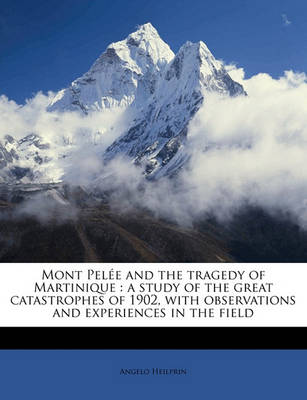Cambridge Library Collection - Earth Science
2 total works
Born in Hungary, the geologist Angelo Heilprin (1853–1907) moved with his family to the United States as a boy. He later left New York to study natural sciences in distinguished European institutions, and went on to hold academic positions in Philadelphia and ultimately at Yale. His teaching duties were interspersed with expeditions to Yucatan, Greenland and other places of geological interest. This 1904 study, complemented by unique photographs, depicts his third visit to the island of Martinique in the aftermath of the devastating eruptions of Mount Pelée in 1902. Heilprin documents the temporary formation of Pelée's 'tower', a monolith of lava that grew rapidly after the eruptions, reaching a height of 300 metres before its collapse. Heilprin also summarises the chief features of volcanic eruptions and directs readers to his 1903 publication Mont Pelée and the Tragedy of Martinique (also reissued in this series) for further information.
The geologist and explorer Angelo Heilprin (1853-1907) was one of the first scientists to climb the erupting volcano Mont Pelee in 1902. This study, published the following year, records his on-the-spot observations and the scientific data he collected. The erupting volcano tragically destroyed the city of St Pierre, transforming the tropical paradise of Martinique into disastrous chaos. Heilprin's account includes close-range photographs of the erupting volcano taken by the author himself, illustrating the various phases of its activity. These famous photographs are still widely used today. Heilprin pays tribute to the people of the island, describing the courteous assistance he received during his visits. He compares the Pelee eruptions with Mount Vesuvius and its effects on Pompeii, providing important historical context. The book is recognised as being the most thorough study of the eruption sequence and its consequences - one of the greatest natural disasters of the twentieth century.

